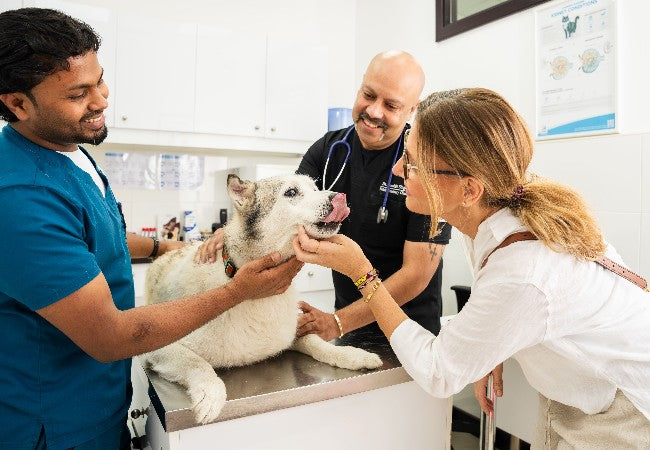Vet’s 2025 Guide to Glucosuria in Dogs – Causes, Diagnosis & Care 🐶

In this article
Vet’s 2025 Guide to Glucosuria in Dogs – Causes, Diagnosis & Care 🐶
By Dr. Duncan Houston BVSc
💡 What Is Glucosuria?
Glucosuria (or glycosuria) means glucose is present in a dog’s urine—normally all filtered glucose is reabsorbed by the kidneys. Its presence often flags an underlying issue such as diabetes mellitus or renal dysfunction.
⚠️ Who’s at Risk & Why?
- Hyperglycemic glucosuria: Blood glucose exceeds ~180 mg/dL, common in diabetes, Cushing’s, pancreatitis, stress, or drug use (steroids, epinephrine).
- Normoglycemic (renal) glucosuria: Glucose in urine despite normal blood sugar, often due to Fanconi syndrome or inherited tubular defects (Scottish terriers, Basenjis, etc.).
🔍 Signs & Clinical Clues
- Excessive drinking & urination (polydipsia/polyuria), diluted urine.
- If due to diabetes: weight loss, ravenous appetite, cataracts, frequent infections.
- With renal causes: possible metabolic issues, electrolyte imbalance, weak urine concentrating ability.
🧪 How It’s Diagnosed
- Urinalysis & dipstick: Detect glucose; may require multiple samples due to intermittent shedding.
- Blood tests: Fasting blood glucose, CBC, chemistry; confirm hyperglycemia in diabetes.
- Serum fructosamine: Helps differentiate persistent normoglycemia from diabetes-related glucosuria.
- Advanced tests: Glucose tolerance test, breed-targeted tests (e.g., Fanconi syndrome), kidney imaging, biopsy in renal disease suspicion.
💊 Treatment & Management
- Address underlying cause: Diabetes treated with insulin & dietary therapy; endocrine or pancreatic causes managed accordingly.
- Renal glucosuria: Usually benign; Fanconi syndrome requires lifelong management of electrolytes, fluids, and nutrition.
- Stop triggering drugs: Remove steroids, glucose infusions, or toxins if identified.
- Supportive care: Rehydration, monitor electrolytes, treat infections or complications.
📈 Follow-Up & Monitoring
- Frequent blood glucose checks in diabetic dogs—home or clinic-based curves for dose adjustments.
- Periodic urinalysis and biochemical panels to track renal or electrolyte status.
- Serum fructosamine monthly in early diabetes management.
- Breed-specific monitoring for known inherited glucosuria conditions.
🛡️ Long-Term Outlook
With proper diagnosis and treatment:
- Diabetic dogs can live long, healthy lives with insulin and diet control.
- Primary renal glucosuria often has excellent outcomes without specific therapy.
- Fanconi syndrome prognosis varies—early detection and electrolyte support improve quality of life.
📲 Owner Tools & Support
- Ask A Vet – real-time telehealth help with diagnosis, dosing, and monitoring plans.
🌟 Case Example
Case: Max, a 4-year-old Scottish Terrier, was found to have glucosuria during a routine exam but normal blood glucose. Fructosamine and breed screening confirmed primary renal glucosuria. No treatment was needed; annual monitoring ensures kidney health remains stable. 🐶
✅ Final Takeaways
- Findings of glucose in urine require further testing—not all cases are diabetes.
- Blood tests, fructosamine, and urine monitoring help differentiate causes.
- Management varies: insulin & diet for diabetes, supportive care for renal causes.
- Monitoring and early intervention can ensure excellent outcomes.
📥 Get Expert Support
Download the Ask A Vet app for live guidance on glucosuria, diabetes care, or kidney function monitoring. Visit AskAVet.com for 24/7 vet access. 🐾🩺






